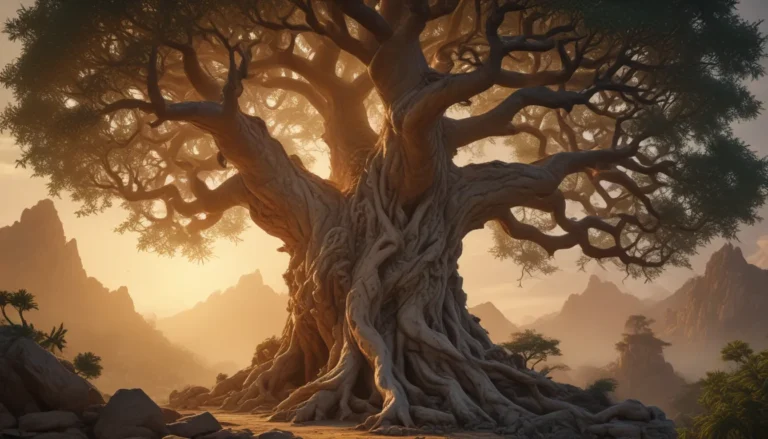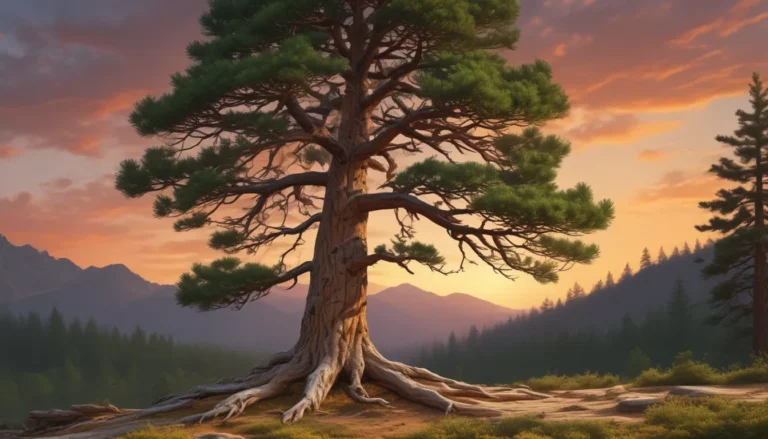The pictures we use in our articles might not show exactly what the words say. We choose these pictures to make you interested in reading more. The pictures work together with the words but don’t take their place. The words still tell you the important facts.
The Eastern Hemlock, also known as Tsuga canadensis, stands as a majestic and essential tree species within the ecosystems of North America. Its towering presence in dense forests, coupled with its significant impact on wildlife and human communities, makes the Eastern Hemlock a symbol of resilience and natural beauty. Join us on an enlightening journey through 18 captivating facts about the Eastern Hemlock, as we delve into its ecological importance, unique characteristics, and historical significance.
Unlocking the Mysteries of the Eastern Hemlock
The Eastern Hemlock, a majestic evergreen tree, provides vital habitat for wildlife and is valued for its strength and durability in construction and woodworking. This iconic tree symbolizes resilience, timeless beauty, and plays a crucial role in old-growth forests, inspiring artists and nature enthusiasts for generations.
Discovering the Majesty of the Eastern Hemlock
- The Eastern Hemlock is an Evergreen Coniferous Tree: Known for retaining its lush, green foliage throughout the year.
- It Can Live for Centuries: Some specimens have been recorded to live for over 800 years.
- The Eastern Hemlock is the State Tree of Pennsylvania: Designated as the official state tree in 1931.
The Ecological Significance of the Eastern Hemlock
- It Provides Vital Habitat for Wildlife: The dense foliage of the Eastern Hemlock offers crucial shelter for various wildlife species.
- Eastern Hemlock Wood is Valued for its Strength and Durability: Highly prized in construction and woodworking for its robust qualities.
- The Species Faces Threats from Invasive Pests: The hemlock woolly adelgid poses a significant risk to the survival of Eastern Hemlock trees.
Uncovering the Unique Features of the Eastern Hemlock
- It Is a Shade-Tolerant Species: Thrives in shaded environments, particularly the understory of dense forests.
- Eastern Hemlock Needles Have a Distinctive Appearance: Flat, short needles arranged in two distinct rows along the twigs.
- The Bark of the Eastern Hemlock is Dark and Furrowed: Adds to the majestic appearance of mature trees.
Exploring the Cultural and Historical Significance of the Eastern Hemlock
- Eastern Hemlocks Play a Key Role in Old-Growth Forests: Contributing to the diverse ecosystems found in these environments.
- It Has a Rich History of Traditional Uses: Utilized by Indigenous peoples and early settlers for medicinal, practical, and ceremonial purposes.
- Eastern Hemlock Forests are of Cultural Importance: Inspiring artists, writers, and nature enthusiasts for generations.
Preserving the Eastern Hemlock for Future Generations
- Eastern Hemlock Forests Play a Role in Mitigating Climate Change: Contributing to carbon sequestration and helping to combat climate change.
- It Is a Keystone Species in Eastern Forest Ecosystems: Exerting a profound influence on the ecological dynamics of these ecosystems.
- The Eastern Hemlock is a Symbol of Timeless Beauty: Embodying natural beauty and enduring grace in the forests of eastern North America.
In conclusion, the Eastern Hemlock is a remarkable and ecologically vital tree species that has a rich history and a significant impact on its surrounding environment. Despite the threats it faces, including the destructive hemlock woolly adelgid infestation, conservation efforts and research are actively underway to safeguard the future of this iconic tree. By understanding the various facets of the Eastern Hemlock, from its physical characteristics to its ecological importance, we can appreciate and advocate for the preservation of this invaluable species for generations to come.
FAQs
Q: What are the main threats to Eastern Hemlock trees?
A: The primary threat to Eastern Hemlock trees is the invasive hemlock woolly adelgid, a tiny insect that feeds on the tree's sap, ultimately causing mortality. Climate change, logging, and habitat destruction also pose significant threats to the species.
Q: How can I help in the conservation of Eastern Hemlock trees?
A: You can contribute to the conservation of Eastern Hemlock trees by supporting efforts to control the spread of the hemlock woolly adelgid, participating in reforestation projects, and advocating for the preservation of hemlock-rich ecosystems. Additionally, spreading awareness about the importance of Eastern Hemlock trees and their role in maintaining biodiversity is crucial for their conservation.
In conclusion, the Eastern Hemlock is a remarkable tree species that deserves our attention and protection. As we continue to explore and learn about the wonders of this iconic tree, let us strive to preserve its beauty and ecological significance for generations to come.






